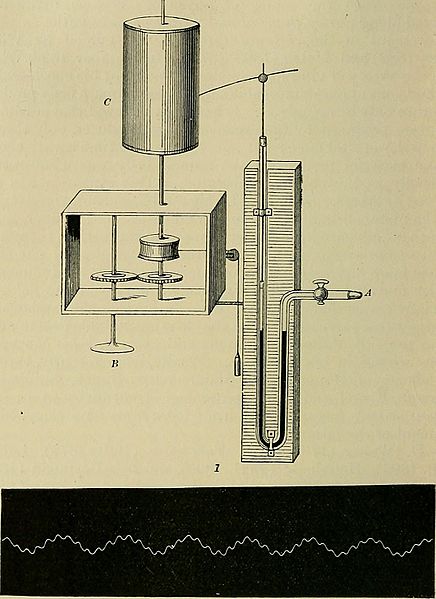Archivo: General physiology; an outline of the science of life (1899) (14779699911)

Descripción: Identifier: generalphysiolo00verw (find matches) Title: General physiology; an outline of the science of life Year: 1899 (1890s) Authors: Verworn, Max, 1863-1921 Lee, Frederic S. (Frederic Schiller), 1859-1939, ed. and tr Subjects: Physiology Publisher: London, Macmillan and co., limited New York, The Macmillan company Contributing Library: Columbia University Libraries Digitizing Sponsor: Open Knowledge Commons View Book Page: Book Viewer About This Book: Catalog Entry View All Images: All Images From Book Click here to view book online to see this illustration in context in a browseable online version of this book. Text Appearing Before Image: rface of paper moved at auniform rate (Fig. 1). He thus surpassed all others in creating amethod of the greatest value in the investigation of the purelyphysical activities of the animal body. This-graphic method provedso extremely fruitful that it found wide employment in physiology.It was used for the graphic representation of muscle-contraction,of respiratory movements, of the heart-beat, etc. In France, Mareydeveloped it to unexpected completeness; so that now it serves asthe most important method of investigation in all researches thatdeal with the phenomena of macroscopic movement. One othermethod became fundamentally important in physical physiology,namely, that of the comprehensive and ingenious technique ofgalvanic stimulation, which was created by E. du Bois-Reymondsclassic researches upon the general physics of muscle and nerve. 24 GENERAL PHYSIOLOGY By the perfection of this technique du Bois-Reymond made thegalvanic current of all stimuli the most convenient to employ and Text Appearing After Image: 11 Fig. 1.—/. Ludwigs kymograph. One limb of the manometer is connected with an artery at A ;the blood-pressure is transmitted to the column of mercury (represented in black), thence tothe float upon the mercury in the other limb, and puts this float with its writing-lever inmotion. The writing-lever inscribes its movements upon the drum, C, which is kept inconstant rotation by a clock-work, B. (From Briicke). 11. Pulse-curve from a rabbit. Thesmall waves represent the variations in blood-pressure that constitute the pulse ; the largewaves, the variations that the blood-pressure undergoes as the result of respiration. the most capable of fine gradation and easy localisation fur nervesand muscles; for these reasons it now holds the first place instimulation-experiments. METHODS OF PHYSIOLOGICAL RESEARCH 25 The wide applicability of this ingenious physical method is dueto the perfection of the technique of vivisection on the part of thegreat French physiologists, Magendie (1783-1855) Note About Images Please note that these images are extracted from scanned page images that may have been digitally enhanced for readability - coloration and appearance of these illustrations may not perfectly resemble the original work.
Título: General physiology; an outline of the science of life (1899) (14779699911)
Créditos: https://www.flickr.com/photos/internetarchivebookimages/14779699911/ Source book page: https://archive.org/stream/generalphysiolo00verw/generalphysiolo00verw#page/n40/mode/1up
Autor(a): Internet Archive Book Images
Permiso: At the time of upload, the image license was automatically confirmed using the Flickr API. For more information see Flickr API detail.
Términos de Uso: No known copyright restrictions
Licencia: No restrictions
Enlace de Licencia: https://www.flickr.com/commons/usage/
¿Se exige la atribución?: No
Usos del archivo
La siguiente página enlaza a este archivo:

